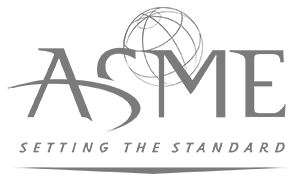Vial and Syringe Filling in the BioTech and Pharmaceutical Industries
At Holland, one particular area of the biotechnology industry has becoming increasingly interesting to us is final product fill and finish. We’ve found that many of our core competencies have prepared us to help end users and equipment providers deal with the challenges associated with getting final drug product in a jar. As the pharmaceutical industry continues to evolve, increasing pressure is being been placed on filling machine providers by end users to focus on improving the flexibility, reliability, and efficiency of the filling process. This post will take a look at the most common types of pharmaceutical filling equipment and recent trends that are interesting to us.
Rotary Piston Pumps
While pharmaceutical companies are driving vendors towards single use, disposable dosing systems- systems where the entire fluid path is discarded- the most commonly used filling mechanism used today is still the rotary piston pump. Rotary piston filling machines use a matched set of piston and cylinder to dispense precise volumes of liquid. These machines are suitable for a wide range of viscosities, temperatures, and fill volumes. They work well with a variety of challenging products including shear sensitive or low surface tension products. While this has historically been the most popular type of filling machine, drawbacks include the need to disassemble and clean the machine after each use. CIP/SIP of piston pumps can be problematic and they are not offered with completely disposable flow paths.
Rolling Diaphragm Pumps
This type of filling machine is essentially a variant of a piston pump. These systems use a diaphragm to push and pull product in and out of the machine. While historically also stainless steel, recently technological breakthroughs, such as PSG Biotech’s Quattroflow quaternary diaphragm pump, have allowed for the use of polycarbonate pump heads and disposable needles, allowing for a fully consumable flow path.
Peristaltic Pump Systems
While originally used for fluid transfer, rather than high speed, accurate dosing, recent advance in servo-drive controls have given machine suppliers the ability to control the motion and position of the peristaltic pump rollers and have integrated feedback from the machines check weighing system. The key advantage to this technology is that it offers complete disposability, with almost no chance from product cross contamination. Limitations of this technology include limited viscosity range, tubing spallation, and somewhat low precision compared to other technologies.
Time/Pressure
These systems incorporate a pressurized product tank and pinch valves to open and close silicone tubing between the bulk tank and filling needle. In these systems, it is critical to control and monitor tank headspace pressure and overall system conditions. That being said, recent advances in the ability to control the aforementioned has allowed time/pressure systems to become just as accurate as pump systems in some cases. Other big pluses to time/pressure applications are very low shear and compatibility with CIP/SIP.
Drawbacks to time/pressure systems can include inaccuracies due to variation of vessel head space, no disposable flow paths, and an increased amount of time to tune in and start a fill for a process that can be affected by temperature or other factors affecting fluid flow properties.
Mass-Flow
The last type of machine we’ll touch on are mass-flow fill systems. These use mass as opposed to volume dispensing via the Coriolis effected. The Coriolis Effect occurs when fluid passes through a vibrating sensor tube. These tubes, which constitute a Coriolis meter will then communicate with a valve controlling discharge through the machines needles. Mass flow dispensing is the type we see least often, due to viscosity and accuracy limitations, with applications primarily limited to opthamalic product fills.
To conclude, substantial progress has been made toward improving the accuracy and control of the filling process. Increasingly robust technology has enabled rapid changed over and flexible lines that allow users to be responsive to changing customer demands. Holland is proud to offer both stainless and single use solutions, including needles, tanks, pumps, and manifolds (all in both stainless and disposable) to help our customers with their unique filling challenges. For more information about your next fill/finish application, contact a Holland Sales Engineer today.






